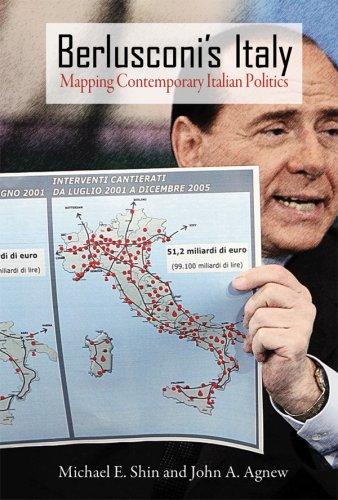Paperback, 184 pages
English language
Published March 28, 2008 by Temple University Press.

Paperback, 184 pages
English language
Published March 28, 2008 by Temple University Press.
Berlusconi’s Italy provides a fresh, thoroughly informed account of how Italy’s richest man came to be its political leader. Without dismissing the importance of personalities and political parties, it emphasizes the significance of changes in voting behaviors that led to the rise—and eventual fall—of Silvio Berlusconi, the millionaire media baron who became prime minister. Armed with new data and new analytic tools, Michael Shin and John Agnew reveal that regional politics and shifting geographical voting patterns were far more important to Berlusconi’s successes than the widely credited role of the mass media.;
Shin and Agnew reject the prevailing orthodoxy about how coalitions are organized and replaced in Italy. Instead, using recently developed methods of spatial analysis, they offer a compelling new argument about contextual re-creation and mutation. They conclude that Berlusconi’s success (and later defeat) can be best understood in geographic terms, and they suggest that geographical analysis has …
Berlusconi’s Italy provides a fresh, thoroughly informed account of how Italy’s richest man came to be its political leader. Without dismissing the importance of personalities and political parties, it emphasizes the significance of changes in voting behaviors that led to the rise—and eventual fall—of Silvio Berlusconi, the millionaire media baron who became prime minister. Armed with new data and new analytic tools, Michael Shin and John Agnew reveal that regional politics and shifting geographical voting patterns were far more important to Berlusconi’s successes than the widely credited role of the mass media.;
Shin and Agnew reject the prevailing orthodoxy about how coalitions are organized and replaced in Italy. Instead, using recently developed methods of spatial analysis, they offer a compelling new argument about contextual re-creation and mutation. They conclude that Berlusconi’s success (and later defeat) can be best understood in geographic terms, and they suggest that geographical analysis has a useful role to play in examining political behavior in Italy and beyond.